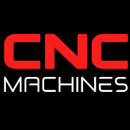CNC Machining vs. 3D Printing: Which is Better and Why?

CNC Machining vs. 3D Printing: Which is Better and Why?
As manufacturing technology advances, the debate between CNC (Computer Numerical Control) machining and 3D printing has become increasingly relevant. Both technologies offer unique advantages and are suitable for different applications. But when it comes to choosing the right process for your project, which one is better? This article delves into the key differences between CNC machining and 3D printing, examining their strengths, weaknesses, and ideal use cases.
What is CNC Machining?
CNC machining is a subtractive manufacturing process where material is removed from a solid block, or blank, to create a finished part. The process is controlled by a computer, which directs the movement of cutting tools to precisely shape the material. CNC machining is widely used in industries such as aerospace, automotive, and medical device manufacturing due to its precision and ability to work with a wide range of materials, including metals, plastics, and composites.
Key Advantages of CNC Machining
- High Precision and Accuracy: CNC machining can produce parts with extremely tight tolerances, making it ideal for applications where precision is critical.
- Material Versatility: CNC machines can work with a broad range of materials, from soft plastics to hard metals like titanium and stainless steel.
- Surface Finish: CNC machining provides a superior surface finish compared to most 3D printing methods, reducing the need for post-processing.
- Scalability: CNC machining is well-suited for both prototyping and full-scale production, offering consistent quality across large production runs.
- Durability: Parts produced through CNC machining typically have higher strength and durability due to the properties of the materials used and the precision of the process.
Key Disadvantages of CNC Machining
- Material Waste: As a subtractive process, CNC machining generates more material waste compared to additive processes like 3D printing.
- Complex Geometries: CNC machining is limited in its ability to produce complex internal geometries and undercuts, which may require multiple setups or specialized tooling.
- Cost: The cost of CNC machining can be higher, especially for complex parts or small production runs, due to the time required for setup and programming.
What is 3D Printing?
3D printing, also known as additive manufacturing, is a process where parts are built layer by layer from a digital model. Unlike CNC machining, which removes material, 3D printing adds material, allowing for the creation of complex geometries and intricate designs that would be difficult or impossible to achieve with traditional manufacturing methods.
Key Advantages of 3D Printing
- Design Flexibility: 3D printing can produce highly complex geometries, including internal structures and intricate details that are challenging for CNC machining.
- Material Efficiency: 3D printing uses only the material necessary to build the part, resulting in minimal waste.
- Rapid Prototyping: 3D printing is ideal for creating prototypes quickly and affordably, allowing for rapid iteration and design validation.
- Customization: The ability to easily modify digital models makes 3D printing well-suited for producing customized parts and one-offs.
- Lower Initial Costs: For small production runs or prototypes, 3D printing often has lower setup costs compared to CNC machining.
Key Disadvantages of 3D Printing
- Surface Finish: Parts produced by 3D printing often require post-processing to achieve a smooth surface finish, especially in processes like Fused Deposition Modeling (FDM).
- Material Limitations: While 3D printing materials are expanding, they still lag behind CNC machining in terms of available materials, especially for high-strength applications.
- Production Speed: 3D printing can be slower than CNC machining, particularly for large parts or high-volume production.
- Mechanical Properties: 3D printed parts may not always match the strength and durability of machined parts, depending on the material and process used.
CNC Machining vs. 3D Printing: Which is Better?
The choice between CNC machining and 3D printing depends on several factors, including the specific requirements of your project, the material you’re using, and your budget. Here’s a closer look at when each process might be the better choice:
When to Choose CNC Machining
- High Precision and Tight Tolerances: If your part requires extremely tight tolerances or a high level of precision, CNC machining is likely the better option.
- Durability and Strength: For parts that need to withstand high stress or harsh conditions, CNC machining provides superior material strength and durability.
- Surface Finish: If a smooth surface finish is essential and you want to minimize post-processing, CNC machining is the way to go.
- Production Runs: For large production runs where consistency and efficiency are key, CNC machining offers the scalability needed to produce high-quality parts at scale.
When to Choose 3D Printing
- Complex Geometries: If your design includes complex internal geometries, undercuts, or intricate details, 3D printing can achieve these without the need for additional setups or specialized tooling.
- Rapid Prototyping: For quickly producing prototypes to test and iterate on your design, 3D printing offers speed and flexibility.
- Customization: If you need to produce customized parts or small batches of unique items, 3D printing’s ability to easily modify digital models makes it an ideal choice.
- Material Efficiency: When material cost and waste are concerns, 3D printing’s additive process minimizes material usage and reduces waste.
Conclusion
There is no one-size-fits-all answer to whether CNC machining or 3D printing is better. Both technologies have their strengths and are best suited to different types of projects. CNC machining excels in precision, durability, and material versatility, making it ideal for high-quality production parts. On the other hand, 3D printing shines in design flexibility, rapid prototyping, and customization, making it perfect for innovative and complex designs.
Understanding the specific needs of your project will guide you in choosing the right manufacturing process. Whether you’re looking for high precision and durability or complex, customized designs, both CNC machining and 3D printing offer powerful solutions to bring your ideas to life.


